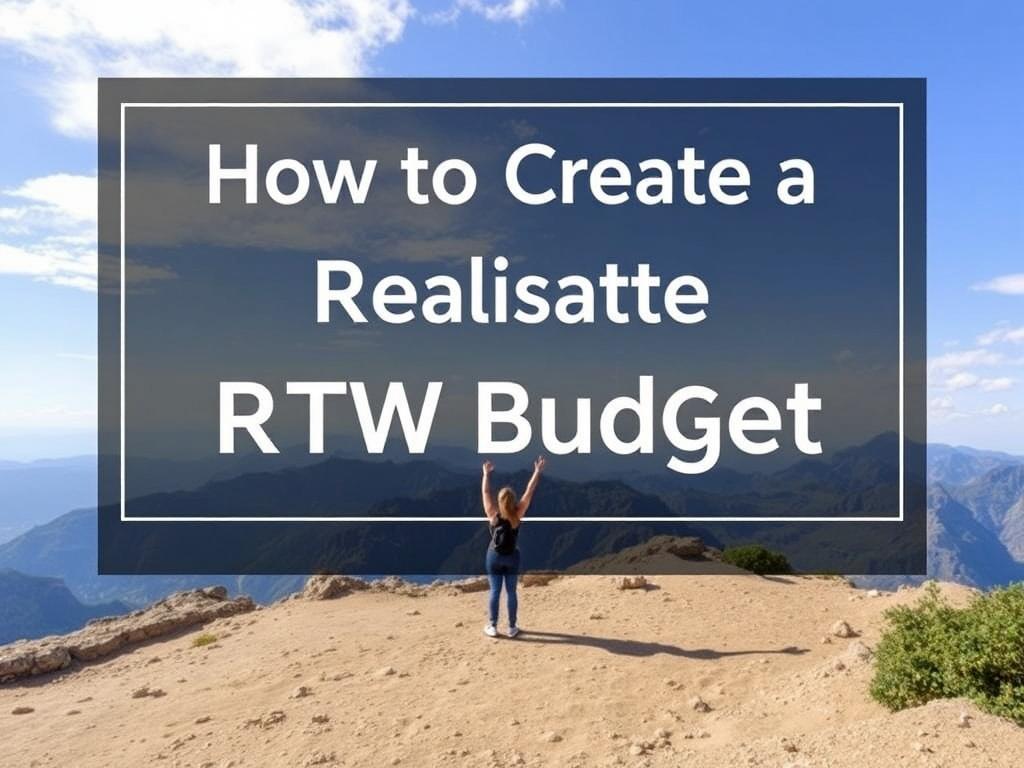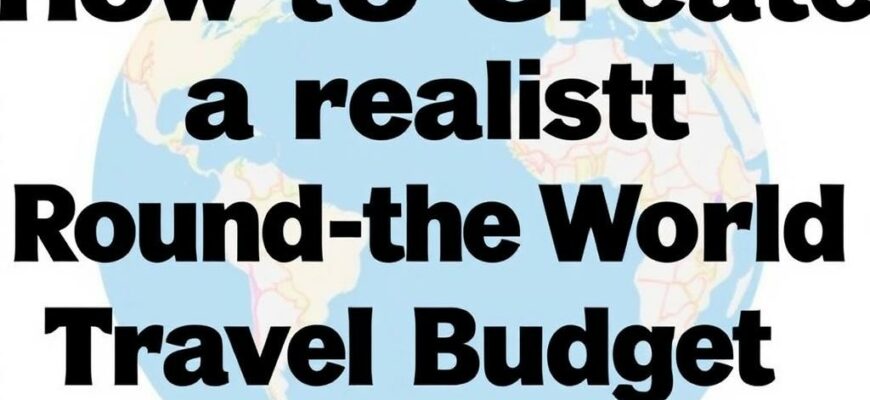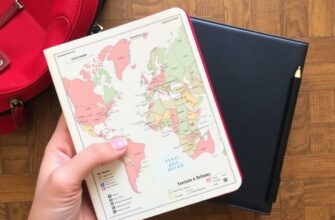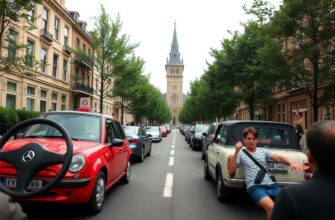Planning a round-the-world (RTW) trip is one of the most exciting adventures anyone can undertake. The thrill of exploring diverse cultures, tasting new cuisines, and witnessing breathtaking landscapes draws millions of travelers year after year. But before you set off on this epic journey, one crucial aspect stands between dream and reality: your travel budget. Crafting a realistic RTW travel budget can make or break your experience, ensuring you have enough funds to sustain your trip without unnecessary stress. In this guide, we’ll walk you through everything you need to know to build a budget that works, with practical tips and insights based on real-world travel experiences.
Understanding the Basics: What Does an RTW Travel Budget Include?

When starting your RTW travel budget, it’s important to understand exactly what expenses you will need to account for. Contrary to what some might think, budgeting for a RTW trip isn’t just about paying for flights. There are numerous costs involved, ranging from accommodation and food to visas and travel insurance. Creating a comprehensive list of potential expenses helps you avoid surprise costs that could derail your plans mid-trip.
Let’s break down the primary categories that should be included in your RTW travel budget:
- Flights and Transportation: This includes your initial flights, transportation between countries or cities, local transport like buses or taxis, and any other travel-related costs.
- Accommodation: Whether you stay in hostels, hotels, guesthouses, or Airbnb, budgeting for lodging is essential.
- Food and Dining: Everyday meals, snacks, and occasional splurges on local delicacies and restaurants.
- Visas and Entry Fees: Some countries require entry visas, others charge tourist fees, so research these costs per destination.
- Travel Insurance: This is critical for protecting you against illness, accidents, or travel disruptions.
- Activities and Sightseeing: Tours, entrance fees to attractions, and other experiences add to your expenses.
- Miscellaneous and Contingencies: Shopping, gifts, souvenirs, phone/internet costs, and emergency funds should be considered.
A well-rounded budget will factor in each of these components. Skimping on any can cause unexpected financial strain, so aim for a realistic estimate rather than an optimistic “best-case” scenario.
Step 1: Research Your Destinations Thoroughly
One of the foundational steps to creating a realistic RTW travel budget is to research the cost of living in each country or region you plan to visit. The world is vast and travel costs vary dramatically from one place to another. For example, Southeast Asia tends to be more budget-friendly for food and accommodation, while Western Europe or Japan often have higher daily expenses.
Start by making a list of all the countries you want to visit. Then, dive into travel blogs, forums, and platforms like Numbeo or Expatistan to get an idea of daily expenses. While these are averages, they give a good sense of what you might spend.
Here is an example of estimated daily costs for popular RTW destinations:
| Destination | Estimated Daily Budget (USD) | Accommodation Type | Notes |
|---|---|---|---|
| Thailand | 25 – 40 | Hostels/Guesthouses | Street food is affordable and delicious |
| Portugal | 50 – 70 | Budget Hotels/Airbnb | Western European prices, but relatively low |
| Japan | 60 – 100 | Business Hotels/Hostels | Public transportation can add up |
| Peru | 40 – 60 | Budget Hotels | Great value for adventure activities |
| Australia | 80 – 120 | Motels/Hostels | Generally expensive, especially in cities |
Once you gather the estimated daily rates, multiply these by the number of days you plan to spend in each place. This will form the backbone of your accommodation and food budget.
Step 2: Calculate Your Transportation Costs
No RTW travel budget is complete without accounting for how you’ll move from place to place. Flights often take the biggest chunk here, but don’t forget local transport, ferries, buses, and occasional taxis or rideshares.
If you’re opting for an RTW flight ticket, research round-the-world airline passes. These often provide cost-effective ways to fly between continents if you book through an airline alliance. However, if your itinerary is flexible, booking flights independently or using budget airlines can sometimes save money.
- RTW Flight Passes: Typically range between $2,000 to $4,000 depending on the number of stops and continents covered.
- Budget Airlines: Airlines like AirAsia, Ryanair, or Jetstar offer inexpensive fares for short to medium-haul trips.
- Local Transportation: Include buses, trains, taxis, or car rentals as needed. This can be a few dollars daily but adds up.
To estimate transportation costs accurately, create a spreadsheet listing your planned route with approximate prices for flights and other transport. Booking flights early can save money, but keep some flexibility to accommodate unexpected changes. Also, factor in airport transfers which can sometimes be expensive.
Step 3: Budget for Accommodation Based on Your Travel Style
Accommodation costs vary widely based on where you stay and your comfort preferences. From budget hostels and Couchsurfing to boutique hotels or short-term apartment rentals, your choices will make a big difference in your budget.
Here are some common accommodation options ranked from budget-friendly to more comfortable:
- Hostels: Great for solo travelers or those wanting to meet others; dorm beds range from $5-$30
- Guesthouses/Guesthomes: Small, often family-run places with a local feel; $15-$50
- Budget Hotels: Private rooms with basic amenities; $30-$80 depending on location
- Airbnb or Vacation Rentals: Can save money if traveling as a group or long-term; varies widely
One tip is to look into long-term stays or monthly rentals if you plan to spend weeks in one place. These often come with discounted rates and better deals. Additionally, using accommodation comparison websites and reading reviews can help you find the best value options without compromising safety.
Step 4: Estimate Daily Food and Drinks Expenses
Food is one of the most enjoyable yet essential parts of traveling. Eating local street food and market fare is often a wonderful way to stretch your RTW travel budget, while dining at touristy restaurants or Western chains can get expensive quickly.
A realistic daily food budget depends on your eating habits and destinations. Below is a rough guide to daily meal expenses in various regions:
- Asia: $5 – $15 (street food and local restaurants)
- Europe: $15 – $30 (groceries and occasional meals out)
- North America: $20 – $40 (mix of cooking and eating out)
- South America: $10 – $25 (local markets and casual dining)
When budgeting, don’t forget to include occasional treats like coffee, snacks, or drinks. For longer trips, developing a routine of cooking your own meals can significantly reduce costs and add to your travel experience.
Step 5: Don’t Overlook Visas, Travel Insurance, and Other Fees
While flights, accommodation, and food take up the lion’s share of your budget, visa fees and insurance can be expensive but are often overlooked by novice RTW travelers.
Visa requirements vary tremendously. Some countries offer visa on arrival or free entry for tourists, while others require advance applications that can cost anywhere from $20 to $200 or more.
Travel insurance is another necessary expense you should budget carefully for. Good travel insurance protects you from medical emergencies, trip cancellations, and lost belongings. Depending on your age, destinations, and coverage, a comprehensive RTW policy can cost between $500 to $1,500 for a year.
Other fees you should keep in mind:
- Tourist taxes or entry fees at certain attractions
- Vaccinations and health precautions before departure
- Communication costs like SIM cards or mobile data plans
It may feel tedious to add these “additional” expenses, but neglecting them can cut your trip short or cause financial distress.
Step 6: Prepare a Contingency Fund for Emergencies
Traveling long-term means being ready for surprises. Things don’t always go according to plan — flight delays, lost luggage, illnesses, or sudden itinerary changes can incur extra costs.
Setting aside a contingency fund, typically 10-20% of your total budget, is a sound safety net. This fund acts as a financial cushion for emergencies or opportunities, ensuring you don’t have to compromise your trip or send for help in stressful situations.
Many seasoned RTW travelers recommend having a separate emergency fund accessible online or via a trusted contact.
Step 7: Track Your Spending and Adjust as You Go

Creating the budget is just the beginning. The real challenge (and key to success) is tracking your expenses regularly and adjusting your spending habits to stay on track.
Use budgeting apps designed for travelers or simple spreadsheets where you log daily expenditures. Tracking helps you understand where your money goes and spot areas to cut costs if needed.
Review your budget monthly to see if your actual expenses are within reasonable ranges and plan next month’s spending accordingly.
Sample RTW Travel Budget Breakdown
To bring all this together, here is a sample budget outline for a one-year RTW trip covering five continents. This example assumes a moderately budget-minded traveler willing to mix hostels and budget hotels, eat mostly local food, and explore a variety of destinations.
| Expense Category | Estimated Cost (USD) | Details |
|---|---|---|
| Flights & Transport | 3,500 | RTW airline pass + local buses/transport |
| Accommodation | 8,000 | Average $22 per night (365 days) |
| Food & Drink | 4,500 | Average $12.50 per day |
| Visas & Entry Fees | 600 | Varies by country |
| Travel Insurance | 1,200 | Comprehensive worldwide coverage |
| Activities & Sightseeing | 2,000 | Tours, museums, excursions |
| Contingency Fund | 2,000 | 10% of total budget |
| Total Estimated Budget | 21,800 |
This is just one framework. Of course, your budget will depend on many factors including travel style, destinations, and trip length.
Tips for Keeping Your RTW Travel Budget Realistic and Manageable
Every budget needs flexibility, discipline, and adjustments. Here are some tips to help you keep your budget realistic while making the most of your RTW trip:
- Be Honest with Yourself: Don’t underestimate expenses or overestimate your ability to stick to a strict budget.
- Plan for Seasons and Events: Traveling during high seasons or festivals can spike prices, so research timing carefully.
- Embrace Slow Travel: Spending more time in each place saves transport and accommodation costs and deepens your experience.
- Use Technology: Apps like Trail Wallet, TravelSpend, or even Google Sheets can help you track expenses on the go.
- Keep Emergency Cash Accessible: Besides digital payment options, always carry a bit of local currency or an international card for emergencies.
Final Thoughts: The Art of Balancing Adventure and Budget

Creating a realistic RTW travel budget is both an art and a science. It involves understanding your personal travel style, doing meticulous research, and preparing for the unexpected. With careful planning, your RTW travel budget transforms from a mere number into a tool for freedom—giving you confidence to explore the world without worry. Remember, the best budget is one that supports your goals and keeps your journey sustainable. So take your time, plan thoughtfully, and get ready for the adventure of a lifetime.
Conclusion
Budgeting for a round-the-world trip may seem daunting at first, but breaking it down into clear steps makes the process manageable and empowering. From researching destination costs to factoring in visas, insurance, and emergency funds, each element plays a crucial role in setting realistic expectations. Tracking your spending and adjusting as you go ensures your finances align with your travel dreams. Ultimately, a well-planned RTW travel budget lays the foundation for a smooth, enriching journey that balances adventure with financial peace of mind. With these insights, you’re now equipped to embark on your RTW adventure confidently, knowing you have control over your travel finances every step of the way.









